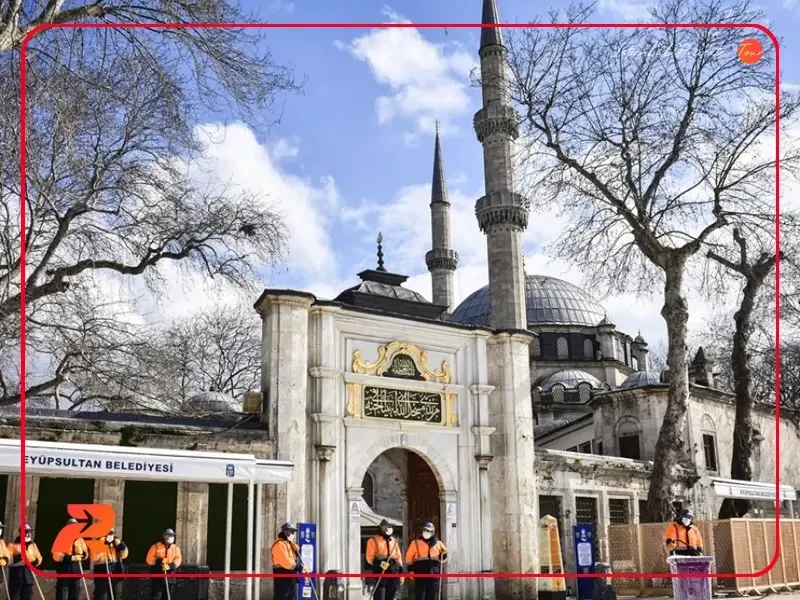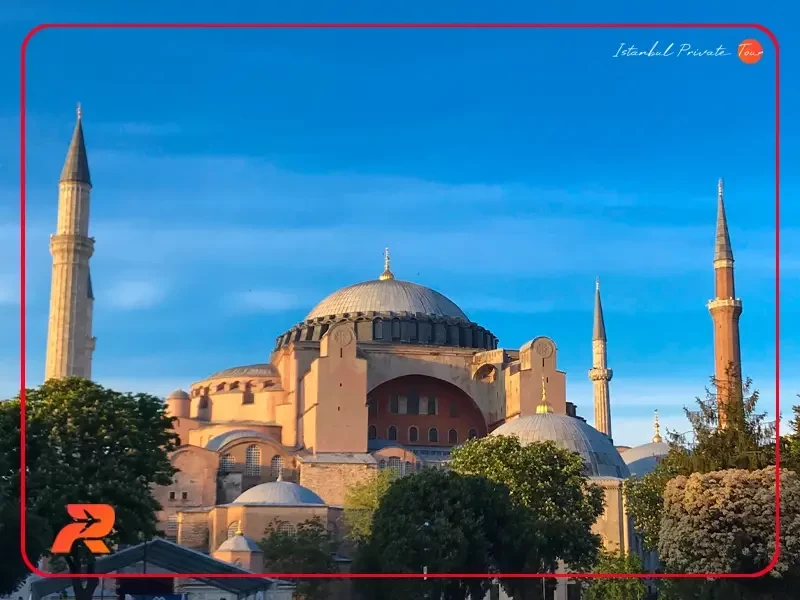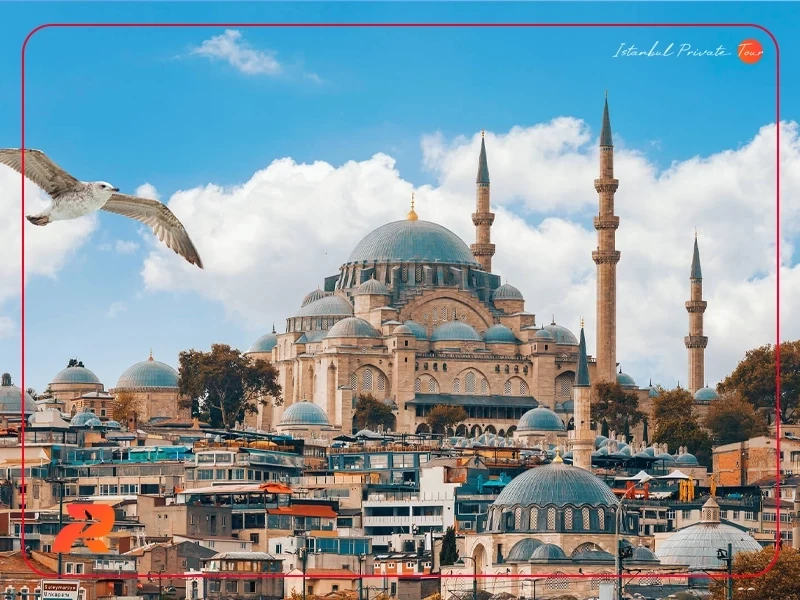Eyup Sultan Mosque in Istanbul

Eyüp Sultan Mosque in Istanbul is one of Turkey’s most important and sacred mosques. This historic landmark is particularly significant because it was built on the site of the tomb of Abu Ayyub al-Ansari, a revered companion and close supporter of the Prophet Muhammad (peace be upon him).
Abu Ayyub al-Ansari was not only a confidant but also the standard-bearer during battles and campaigns led by the Prophet.
His burial place here symbolizes the longstanding connection between Islam and the city of Istanbul, which was known as Constantinople at the time of his death in the first Arab siege of the city (674-678).
This historical and spiritual connection makes Eyüp Sultan Mosque a meaningful destination for visitors from around the world.
Historical Background and the Mosque’s Foundation
Eyüp Sultan Mosque's history dates back to the reign of Sultan Mehmet II, also known as Fatih, or "The Conqueror." Sultan Mehmet II, having successfully captured Constantinople in 1453, sought to honor Abu Ayyub al-Ansari’s legacy by constructing a mosque on this sacred ground.
The mosque was built in 1458, marking it as one of the earliest Ottoman structures erected in Istanbul after the conquest. However, the original mosque was not constructed with high-quality materials, and it eventually suffered significant damage from earthquakes and weathering over the years.
In the early 1800s, during the reign of Sultan Selim III, Eyüp Sultan Mosque was rebuilt and renovated. This reconstruction was designed in a Baroque architectural style, which was popular in Europe at the time and had begun to influence Ottoman architectural tastes.
The mosque’s new design incorporated unique stylistic features, including a distinctive golden hue to the stone used, which gives it a striking appearance against Istanbul’s skyline.
Architectural Features of Eyüp Sultan Mosque
The exterior of Eyüp Sultan Mosque is impressive, with its massive walls and intricate stonework reflecting the beauty of Baroque architecture. The mosque’s striking design is most notable in its main dome, which spans 17.5 meters across and is supported by two smaller half-domes on each side. Inside, visitors are captivated by the mosque’s elegant decor, illuminated with large chandeliers and calligraphic artwork.
The interior color scheme complements the architectural style, creating a peaceful atmosphere that enhances the spiritual experience for worshippers.
The overall architectural influence can be compared to other iconic mosques in Istanbul, such as the Blue Mosque, which also showcases Ottoman elegance but on a larger scale.
Though smaller, Eyüp Sultan Mosque’s grandeur lies in its refined details, historic significance, and sacred association.
The Significance of Abu Ayyub al-Ansari’s Tomb
Beyond the beauty of the mosque itself, the tomb of Abu Ayyub al-Ansari adds a unique reverence to this site. Abu Ayyub al-Ansari, known as the Prophet’s standard-bearer, is buried here, and his resting place has become a site of pilgrimage. The tomb is located just steps away from the mosque and is intricately adorned with beautifully decorated tiles and intricate carvings, which draw visitors in for contemplation and prayer. The spiritual atmosphere surrounding the tomb, coupled with the mosque’s historic architecture, creates a serene setting for those who come to pay their respects.
Legend has it that Abu Ayyub al-Ansari wished to be buried as close to Constantinople as possible, expressing his faith that one day the city would be an important part of the Muslim world. When Sultan Mehmet II discovered the location of his grave, it became a catalyst for honoring him with the construction of the mosque. The Sword of Osman, used in the inauguration ceremonies for new Ottoman sultans, is also symbolically linked to this mosque, underlining its connection to Ottoman heritage.
The Eyüp District: A Traditional Setting
Located in the Eyüp district along the Golden Horn, the mosque is situated in a traditional neighborhood that has retained its historical charm. Surrounded by small cafes, bazaars, and Ottoman-era houses, Eyüp offers a glimpse into Istanbul’s past, making it a popular place for tourists and locals alike.
The area provides a scenic walk, especially up the leafy hill leading to the tomb of Abu Ayyub al-Ansari, where visitors can enjoy panoramic views over the Golden Horn. This peaceful neighborhood offers a retreat from the busy city, allowing visitors to immerse themselves in history.
To reach Eyüp Sultan Mosque, one can take a cable car from the Golden Horn shoreline, which transports visitors up the hill directly to the mosque’s entrance. The scenic ride provides a breathtaking view of the Golden Horn and the surrounding neighborhoods.
For those looking to explore the area further, nearby neighborhoods like Ayvansaray, Balat, and Fener are a short walk away, offering colorful houses, historic churches, and narrow streets that bring Istanbul’s rich history to life.
Visiting Eyüp Sultan Mosque Today
Eyüp Sultan Mosque is a bustling center of activity, especially during significant religious occasions such as Friday prayers and the holy month of Ramadan. During Ramadan, the mosque is particularly lively as people gather to perform Taraweeh prayers, bringing a heightened sense of spirituality to the space. The mosque and its surroundings become illuminated in the evening, adding to the beauty of the night-time prayers.
For those traveling from the heart of Istanbul, such as Taksim or the Sultanahmet area, the mosque is easily accessible by bus or on foot.
There are regular public transportation options that connect the city center to Eyüp, making it convenient for visitors to reach this historic site. Eyüp’s proximity to key landmarks in Istanbul, such as the Golden Horn, Fatih, and Taksim, ensures that visitors can experience a variety of Istanbul’s attractions in one day.
The Lasting Legacy of Eyüp Sultan Mosque
Eyüp Sultan Mosque remains a cornerstone of Istanbul’s Islamic and Ottoman heritage, encapsulating centuries of history and religious devotion.
Its significance as the burial place of Abu Ayyub al-Ansari, an esteemed companion of the Prophet Muhammad, adds a profound connection to early Islamic history. Ottoman sultans, including Sultan Mehmet II, recognized this importance, and the mosque has been preserved and restored over centuries to maintain its spiritual and architectural grandeur.
Today, the mosque stands as a testament to Istanbul’s blend of religious reverence, Ottoman history, and architectural beauty. Its Baroque design sets it apart from other mosques in the city, while the site’s historical significance draws countless pilgrims and visitors.
As a destination for both worship and reflection, Eyüp Sultan Mosque serves as a reminder of Istanbul’s pivotal role in the history of Islam and the Ottoman Empire.
In Istanbul’s ever-evolving landscape, Eyüp Sultan Mosque continues to offer a place of peace, spirituality, and historical reflection for all who visit, linking them to the legacies of Prophet Muhammad, Ottoman sultans, and the city’s Islamic heritage.
Similar Posts

Hagia Sophia Museum and Mosque
When visiting Turkey for tourism, the Hagia Sophia Museum and Mosque in Istanbul are must-see attractions.

Suleymaniye Mosque in Istanbul
The Suleymaniye Mosque in Istanbul stands out as one of the most beautiful and remarkable mosques, particularly notable for its Ottoman architecture, construction


